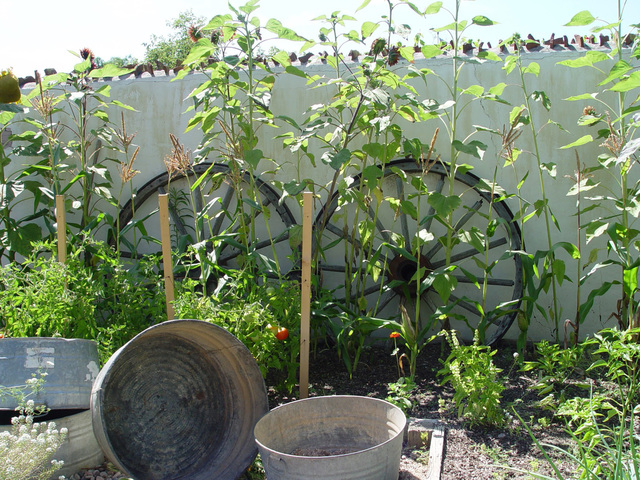Grandfather’s sugar vat teaches important lessons
I was afraid of the fish pond hidden under the camellias in my grandfather’s Los Angeles garden. I felt something frightening lurking there in the inky dark water. It was not until decades later that I learned the truth about that pond while researching our family’s role in New Orleans Reconstruction politics.
In the 1890s, my grandfather’s Creole family fled summer fever season to a dilapidated plantation house on the River Road. This abandoned sugar plantation across the Mississippi was the source of that curious fish pond.
Fleeing segregation years later, they sold the property for an interstate highway. My grandfather rescued a sugar vat, shipped it down the Mississippi, across the Gulf of Mexico, through the Panama Canal and north to his home in Los Angeles. Clearly he thought it important enough to invest a considerable sum in its relocation.
The sugar vat became the last vestige of our family’s Southern history. Perhaps my childhood fear of it was sensitivity to the ghosts of the vat’s own past. Steeped in the iron rivets lay the sweat of slaves who stoked the fire and stirred the contents long before it was abandoned and became ours. These ghosts were among thousands of Africans brought over to work the cane fields, the most brutal of all agricultural endeavors.
Half a century later, when writing my book, “Jumping the Fence: A Legacy of Race in 150 Years of Family Secrets,” I remembered that fish pond as though it were yesterday.
I think of it when I look at our contemporary design trends, too, because the presence of similar industrial elements from great iron factory gears to steel cutting tables are being repurposed as haute landscape style. They are the artifacts of our nation’s 19th- and 20th-century industrial heritage, now primitive relics in the digital age.
The mechanized century touched so many families toiling in mills and factories that the rust belt is a treasure trove of memories. A wagon wheel, a battered anvil, even the petal-like blades of a windmill all bring back the legacy of vanished farms and ranches.
When we bring remnants of these formative years into the everyday realm of our children, they too will be able to form memories like mine that touch the past in a meaningful way. Artifacts become stylishly attractive or even useful in the family garden, evoking stories and memories when gatherings are held there.
Metals gain a rich patina of rust or copper verdigris over time looking better with age and weathering. Though wood rots or is consumed by termites, it becomes delightfully patterned with bright green moss or lichens. Arrange them to look as though they have stood there for a century and you’ll achieve the perfect focal point.
In today’s landscape style, relics blend with plants and hardscape into eye-catching compositions. Nooks and crannies teem with succulents, vines weave into gaps in the iron and stone, and others become fish ponds or piped as fountains.
Design yours as you would a small shrine or frame it with foliage like a revered sculpture. Don’t lose your artifact in the shadows of the camellia bushes — provide ambient lighting to make it visible every night through windows in winter or from outdoor living spaces in summer.
Each of these rescued bits of American history is becoming a museum piece with every new year. They enhance vintage architecture by extending style elements into your garden from colonial to art deco home design. When they are more intimate relics of familial origin, they are accompanied by their own story passed down through generations.
Above all, they stand in mute testament to Edmund Burke’s sage advice so clearly evident in lessons from my sugar vat of those dark days of slavery: “Those who do not know history are bound to repeat it.”
Maureen Gilmer is an author, horticulturist and landscape designer. Learn more at www.moplants.com. Contact her at mogilmer@yahoo.com or P.O. Box 891, Morongo Valley, CA 92256.



















